Abstract
Pigeons were exposed to serial, delay, and trace autoshaping procedures. In Experiment I, all conditioned stimuli (CSs) were changes in illumination of the response key. The number of trials to acquisition of the keypeck increased from serial, to 4-sec delay, 8-sec delay, and 8-sec trace procedures, in that order. In Experiment II, which used a longer intertrial interval, trials to criterion increased from 8-sec delay, to 28-sec delay, 8-sec trace, and 28-sec trace procedures, in that order. In Experiment III, two groups received serial procedures in which the first CS was either a tone or a houselight, and the second was a keylight. The tone group acquired the key peck more rapidly than the houselight group. Early in conditioning in these experiments, and when the conditioned stimulus was a change in the keylight, there was a short latency to the onset of pecking and pecking was directed at the CS. After extensive conditioning, or when the CS was relatively diffuse, pecking still occurred, but had a longer latency and was not reliably directed toward the conditioned stimulus.
Keywords: autoshaping, respondent conditioning, delay conditioning, trace conditioning, serial conditioning, peck, keypeck, pigeon
Full text
PDF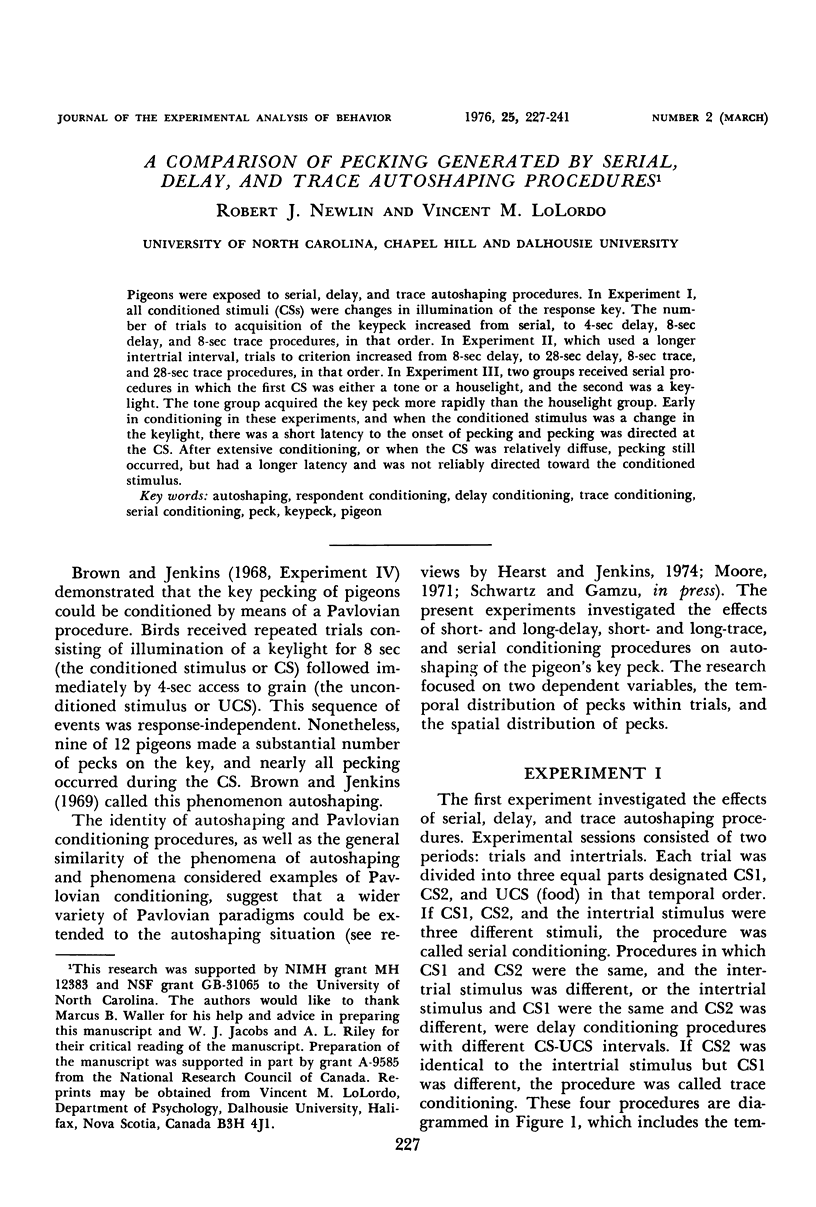
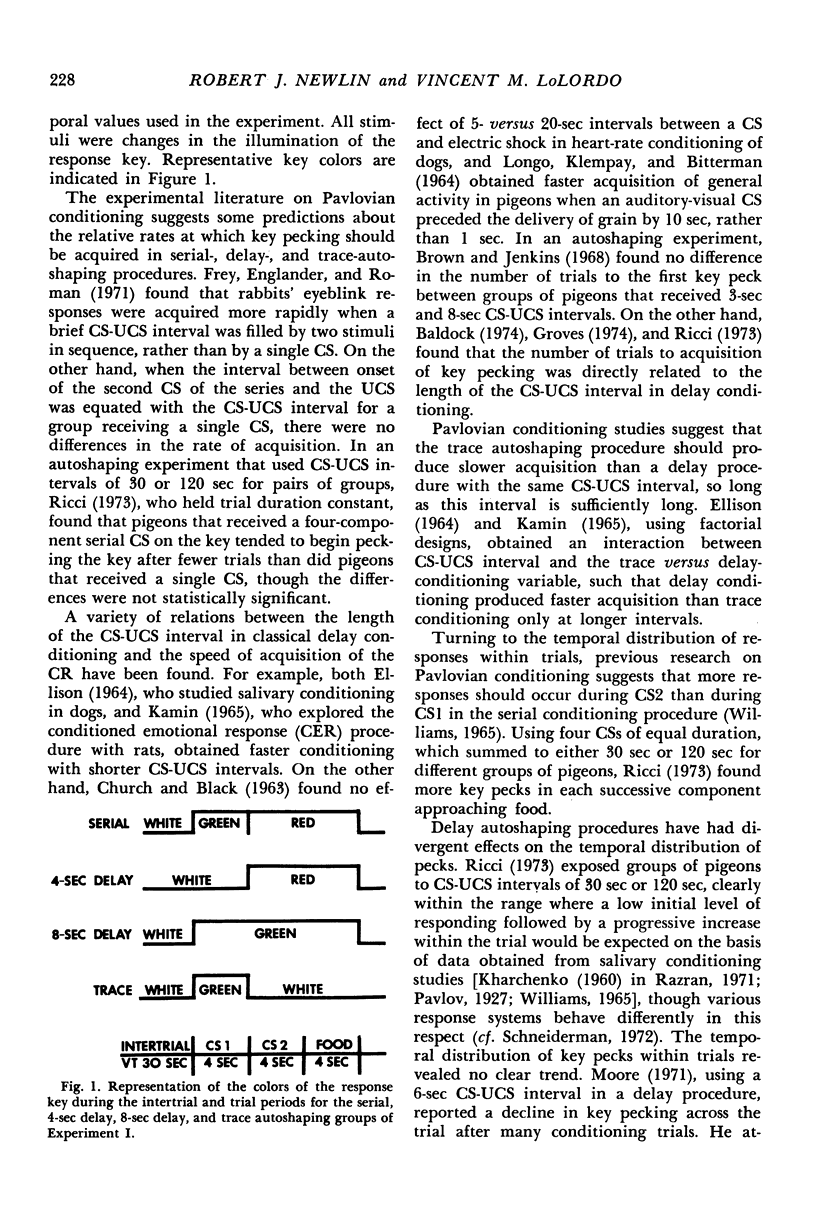
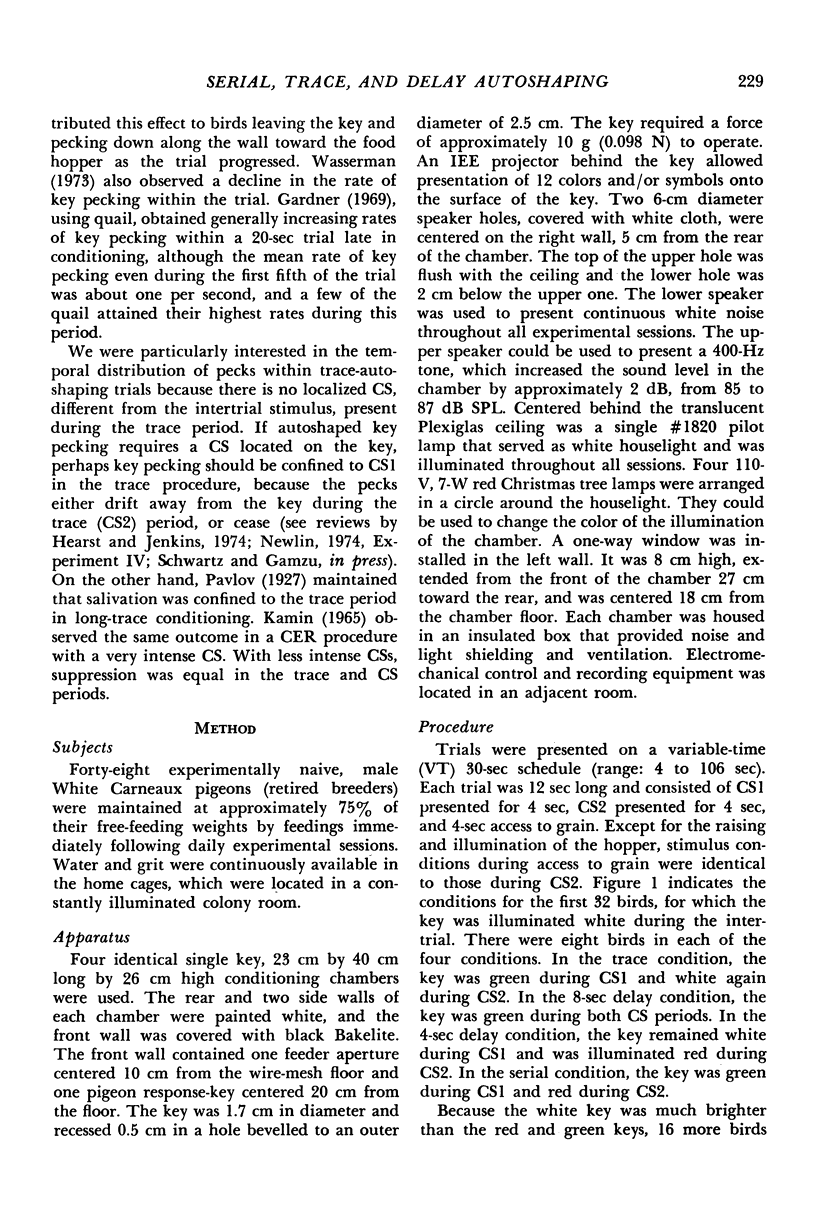
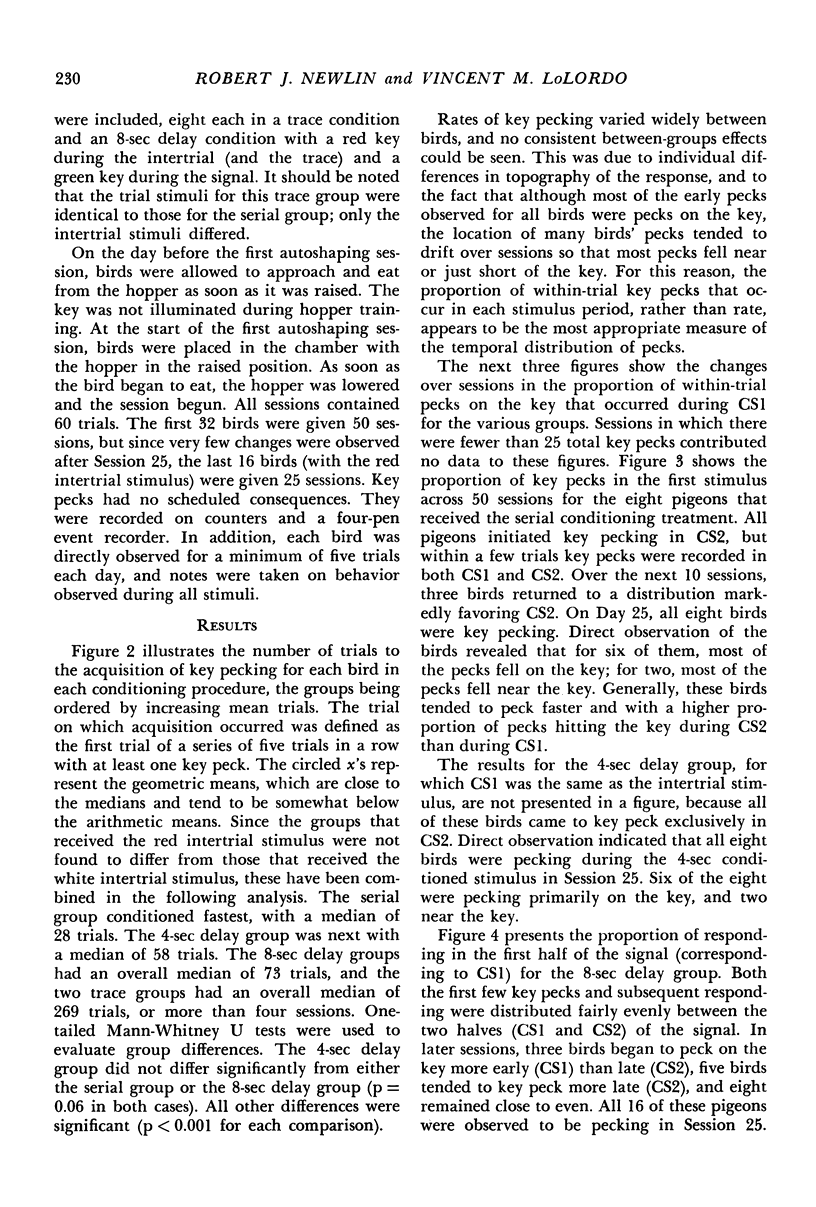
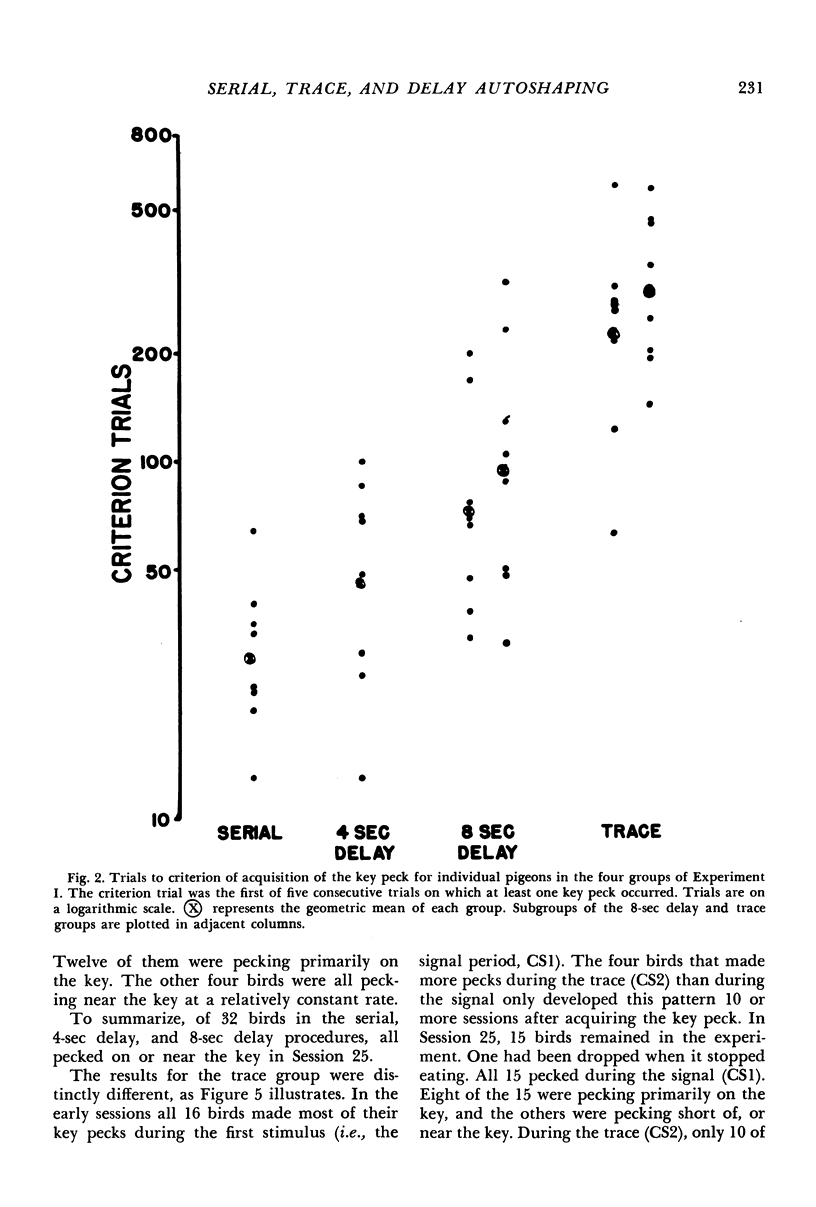
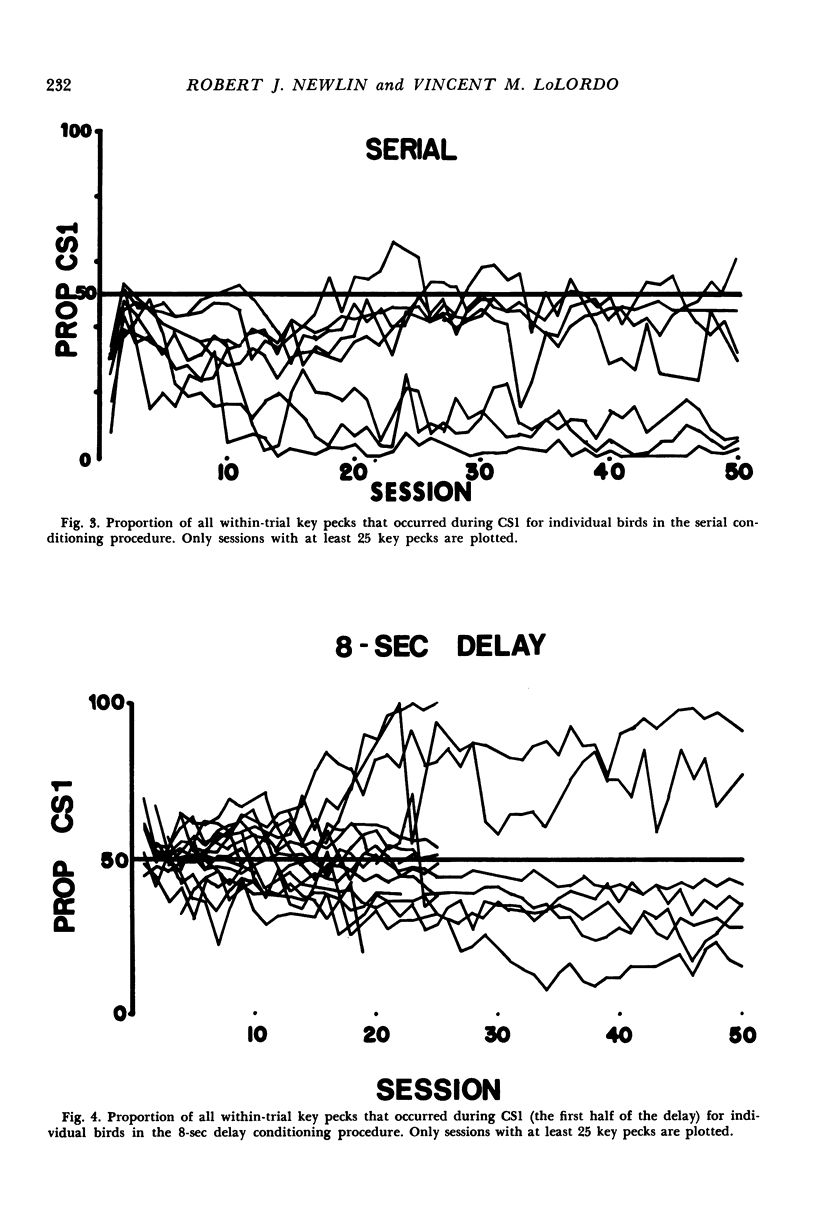
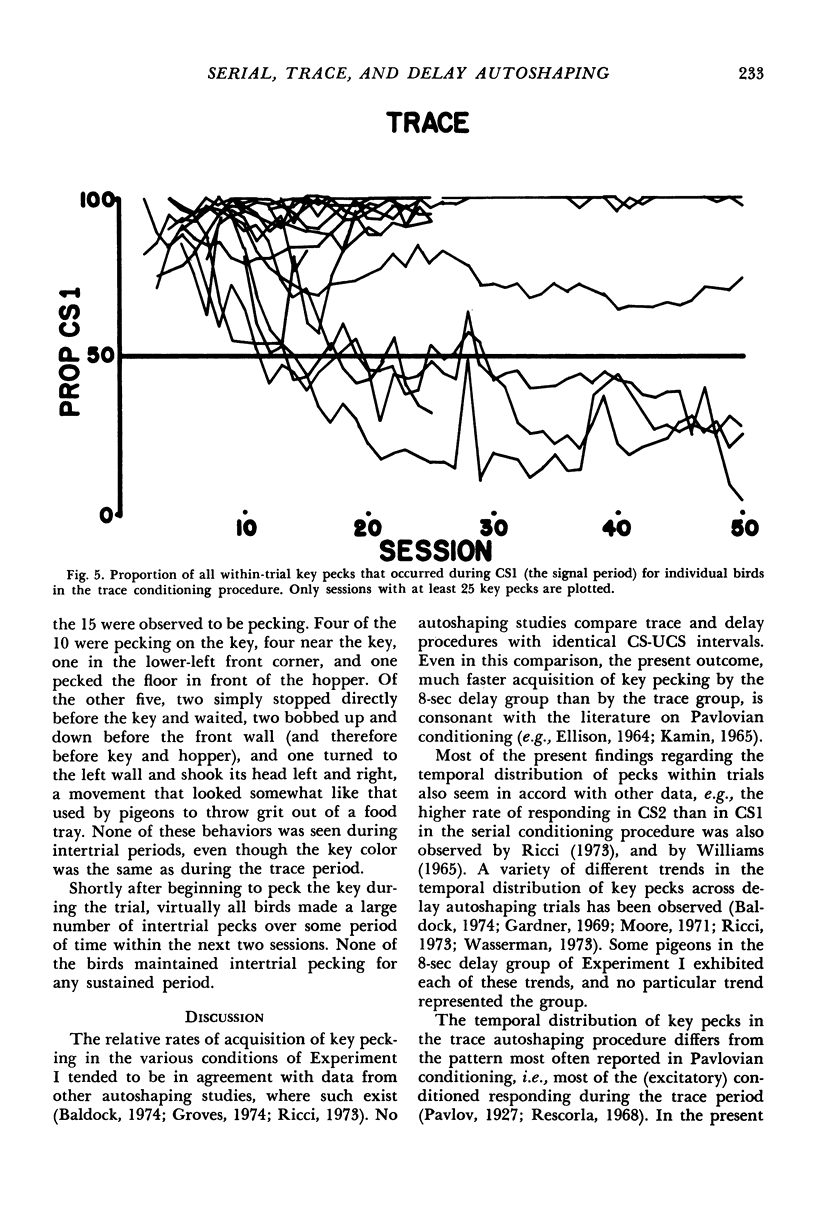
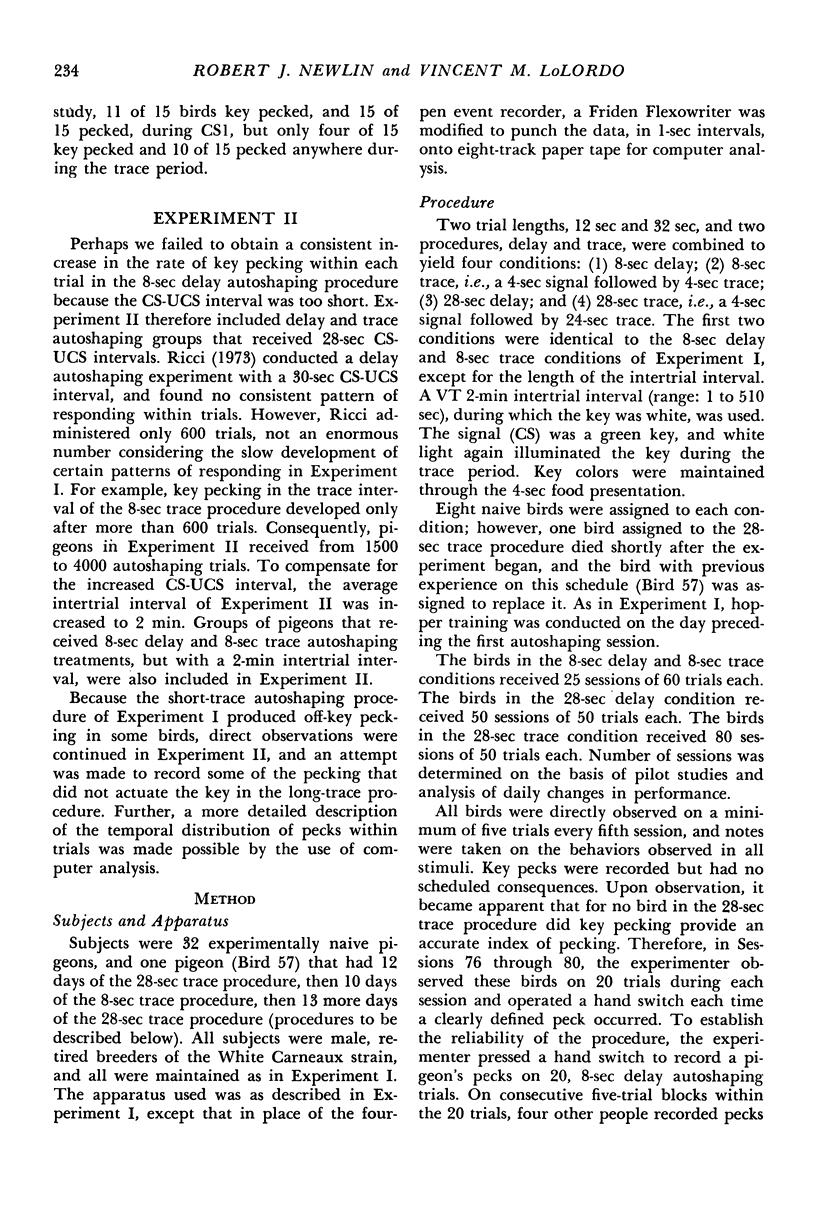
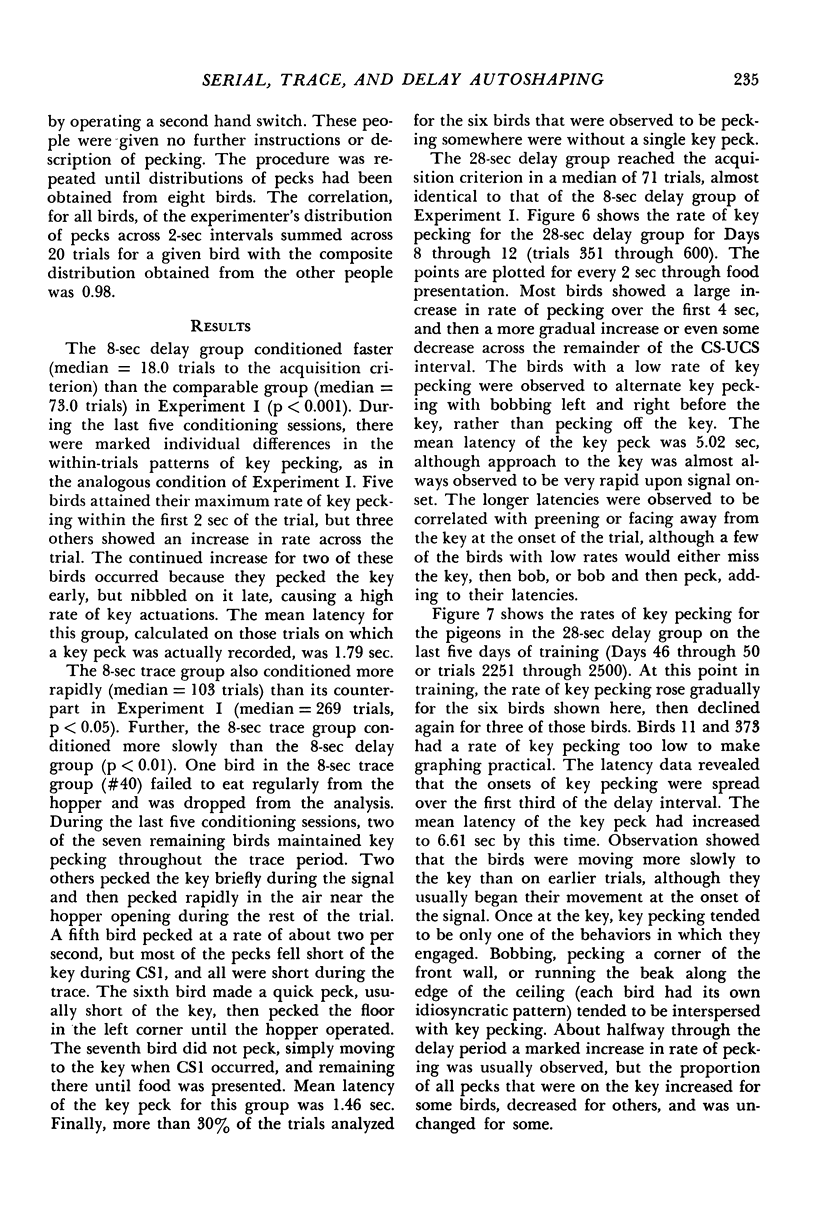
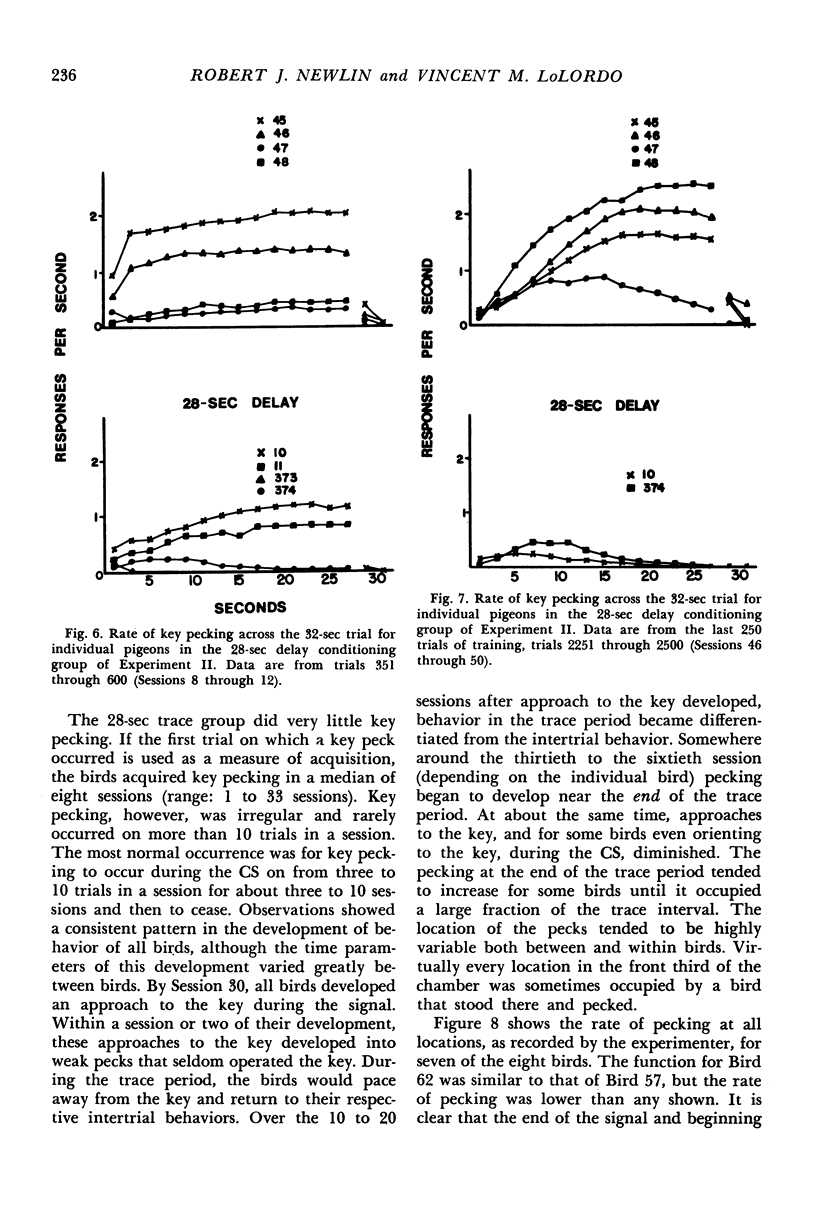
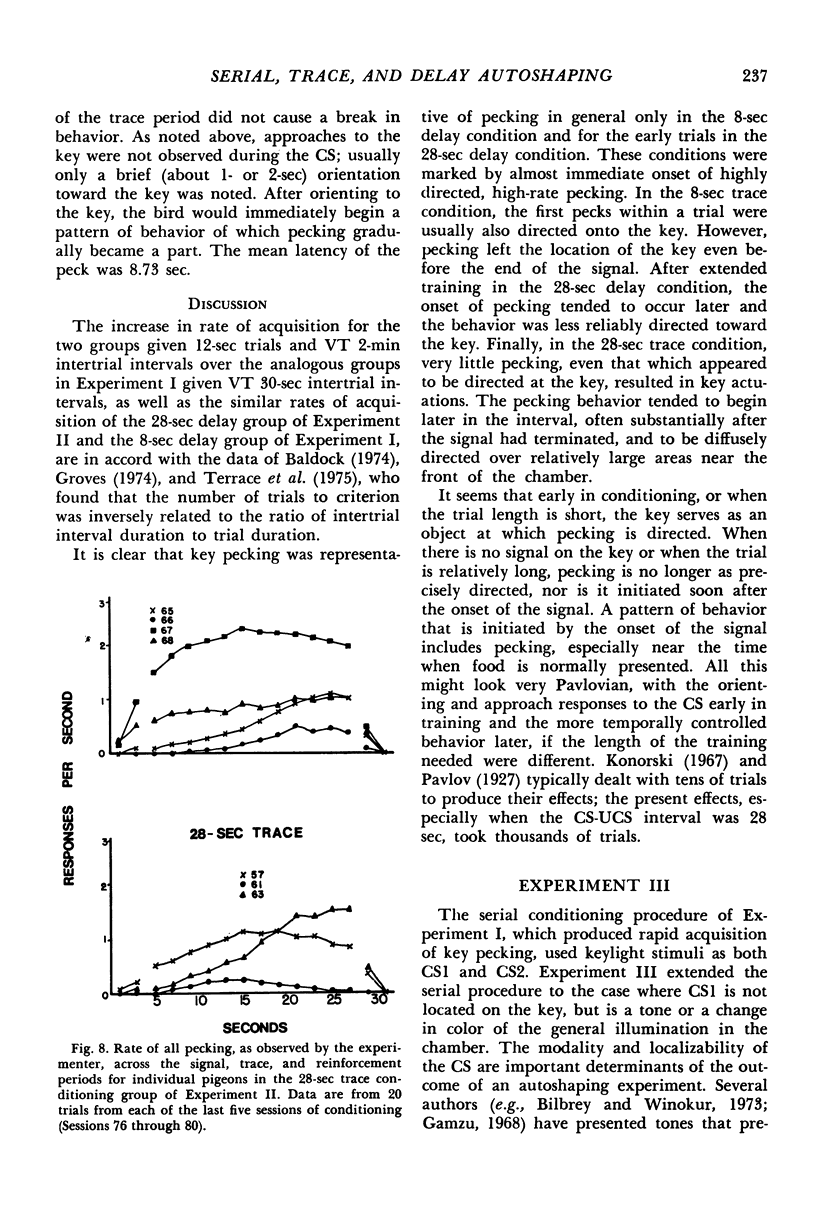
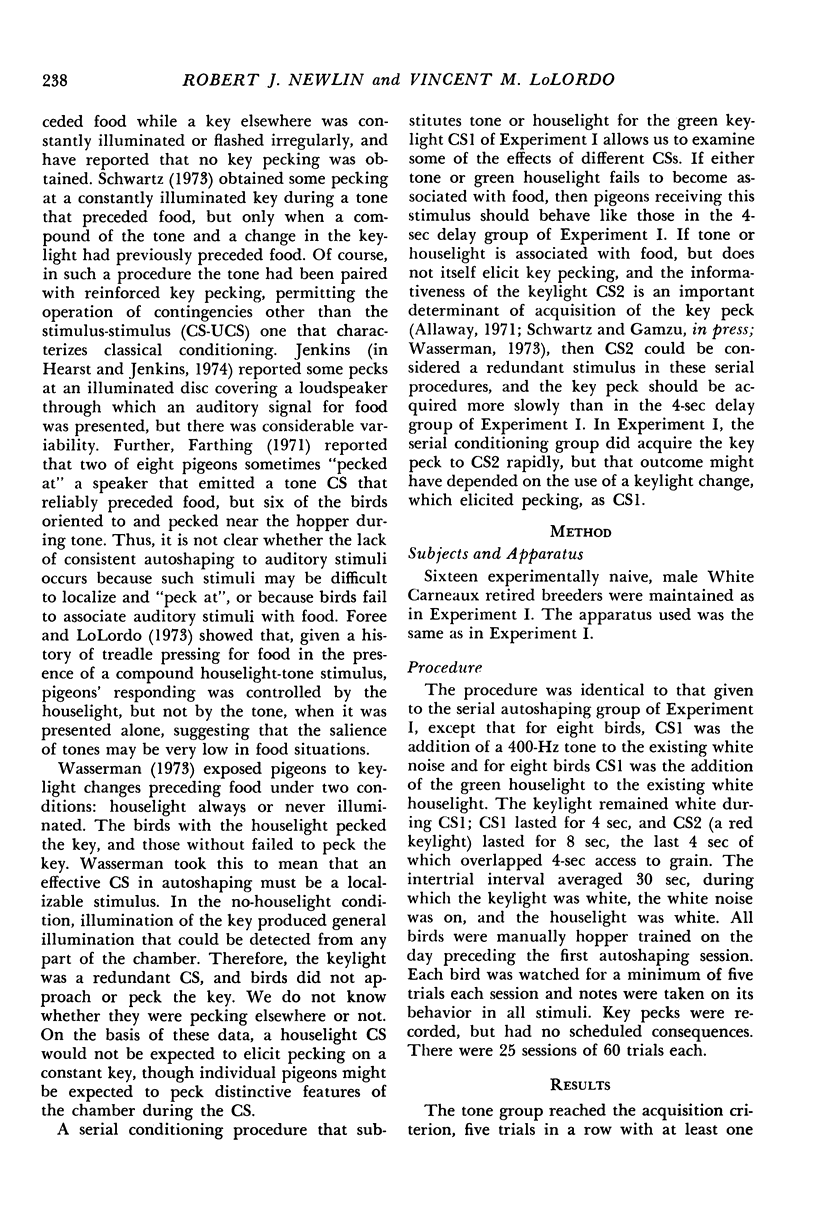
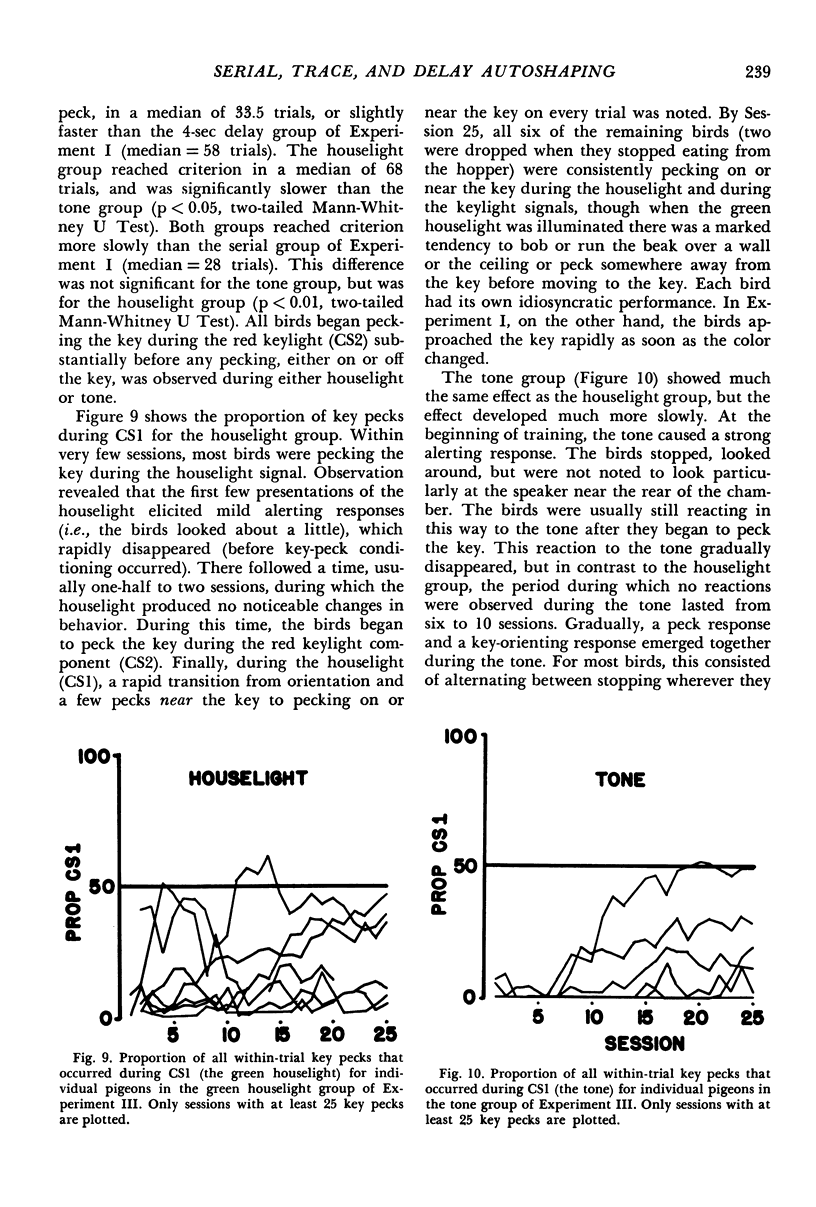
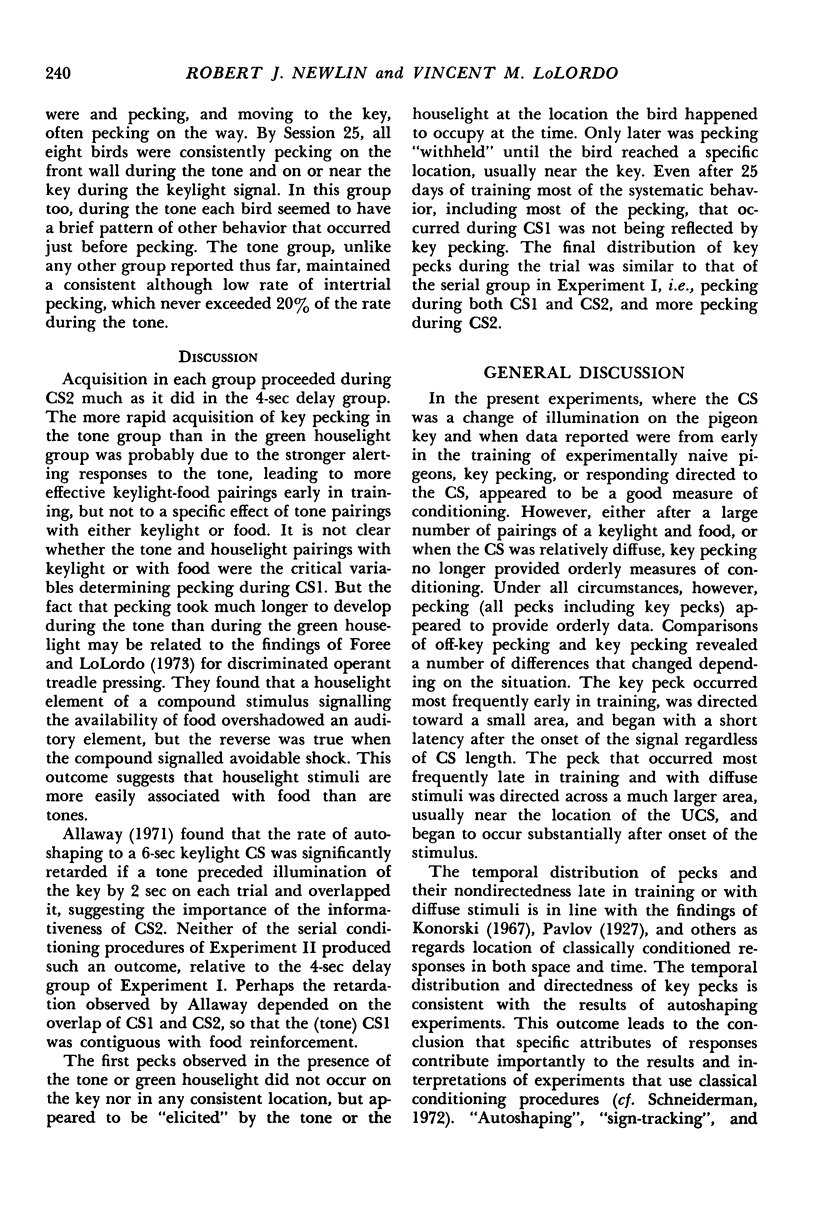
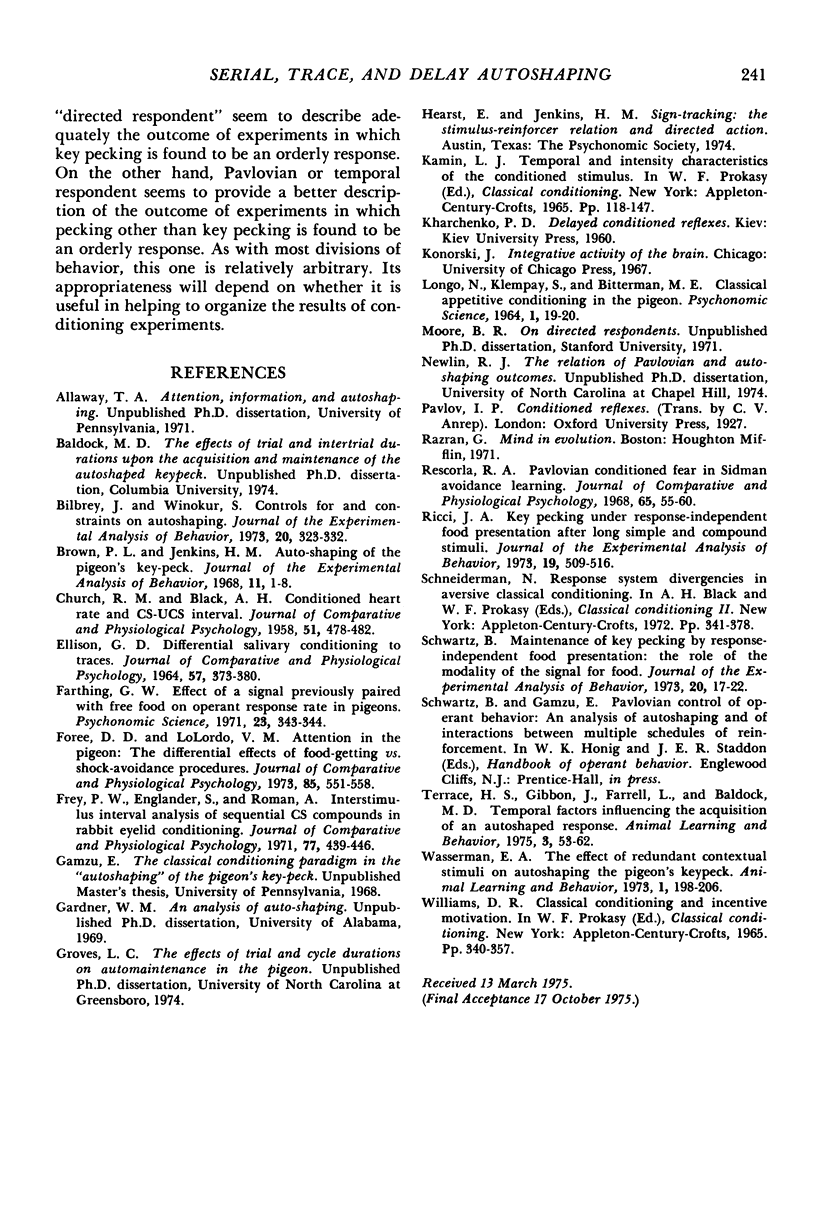
Selected References
These references are in PubMed. This may not be the complete list of references from this article.
- Bilbrey J., Winokur S. Controls for and constraints on auto-shaping. J Exp Anal Behav. 1973 Nov;20(3):323–332. doi: 10.1901/jeab.1973.20-323. [DOI] [PMC free article] [PubMed] [Google Scholar]
- Brown P. L., Jenkins H. M. Auto-shaping of the pigeon's key-peck. J Exp Anal Behav. 1968 Jan;11(1):1–8. doi: 10.1901/jeab.1968.11-1. [DOI] [PMC free article] [PubMed] [Google Scholar]
- CHURCH R. M., BLACK A. H. Latency of the conditioned heart rate as a function of the CS-US interval. J Comp Physiol Psychol. 1958 Aug;51(4):478–482. doi: 10.1037/h0048171. [DOI] [PubMed] [Google Scholar]
- ELLISON G. D. DIFFERENTIAL SALIVARY CONDITIONING TO TRACES. J Comp Physiol Psychol. 1964 Jun;57:373–380. doi: 10.1037/h0046267. [DOI] [PubMed] [Google Scholar]
- Foree D. D., LoLordo V. M. Attention in the pigeon: differential effects of food-getting versus shock-avoidance procedures. J Comp Physiol Psychol. 1973 Dec;85(3):551–558. doi: 10.1037/h0035300. [DOI] [PubMed] [Google Scholar]
- Frey P. W., Englander S., Roman A. Interstimulus interval analysis of sequential CS compounds in rabbit eyelid conditioning. J Comp Physiol Psychol. 1971 Dec;77(3):439–446. doi: 10.1037/h0031881. [DOI] [PubMed] [Google Scholar]
- Rescorla R. A. Pavlovian conditioned fear in Sidman avoidance learning. J Comp Physiol Psychol. 1968 Feb;65(1):55–60. doi: 10.1037/h0025412. [DOI] [PubMed] [Google Scholar]
- Ricci J. A. Key pecking under response-independent food presentation after long simple and compound stimuli. J Exp Anal Behav. 1973 May;19(3):509–516. doi: 10.1901/jeab.1973.19-509. [DOI] [PMC free article] [PubMed] [Google Scholar]
- Schwartz B. Maintenance of key pecking by response-independent food presentation: the role of the modality of the signal for food. J Exp Anal Behav. 1973 Jul;20(1):17–22. doi: 10.1901/jeab.1973.20-17. [DOI] [PMC free article] [PubMed] [Google Scholar]


